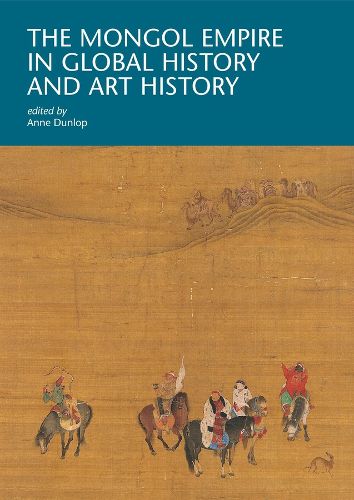Readings Newsletter
Become a Readings Member to make your shopping experience even easier.
Sign in or sign up for free!
You’re not far away from qualifying for FREE standard shipping within Australia
You’ve qualified for FREE standard shipping within Australia
The cart is loading…






With the rise of projects to create global histories and art histories, the Mongol Empire is now widely taken as a fundamental watershed. In the later thirteenth century, the Mongol states reconfigured the basic zones of Eurasian trade and contact. For those they conquered, and for those who later overthrew them, new histories and narratives were needed to account for the Mongol rise. And as people, ideas, and commodities circulated in these vast and interconnected spaces, new types of objects and new visual languages were created, shifting older patterns of artistic production. The Mongol rise is now routinely cast as the first glimmering of an early modernity, defined as an ever-increasing acceleration in systems of contact, exchange, and cultural collision.
Yet what is at stake in framing the so-called Pax Mongolica in this way? What was changed by the Mongol rise, and what were its lasting legacies? It is the goal of essays in this book to address these and other questions about the Mongol impact and their modern role, and to make these debates more widely available. Contributors include specialists of Mongol history and historiography as well as Islamic, East Asian, and European art, writing on topics from historical chronicles to contemporary historiography, and case studies from textile production to mapmaking and historical linguistics.
$9.00 standard shipping within Australia
FREE standard shipping within Australia for orders over $100.00
Express & International shipping calculated at checkout
With the rise of projects to create global histories and art histories, the Mongol Empire is now widely taken as a fundamental watershed. In the later thirteenth century, the Mongol states reconfigured the basic zones of Eurasian trade and contact. For those they conquered, and for those who later overthrew them, new histories and narratives were needed to account for the Mongol rise. And as people, ideas, and commodities circulated in these vast and interconnected spaces, new types of objects and new visual languages were created, shifting older patterns of artistic production. The Mongol rise is now routinely cast as the first glimmering of an early modernity, defined as an ever-increasing acceleration in systems of contact, exchange, and cultural collision.
Yet what is at stake in framing the so-called Pax Mongolica in this way? What was changed by the Mongol rise, and what were its lasting legacies? It is the goal of essays in this book to address these and other questions about the Mongol impact and their modern role, and to make these debates more widely available. Contributors include specialists of Mongol history and historiography as well as Islamic, East Asian, and European art, writing on topics from historical chronicles to contemporary historiography, and case studies from textile production to mapmaking and historical linguistics.